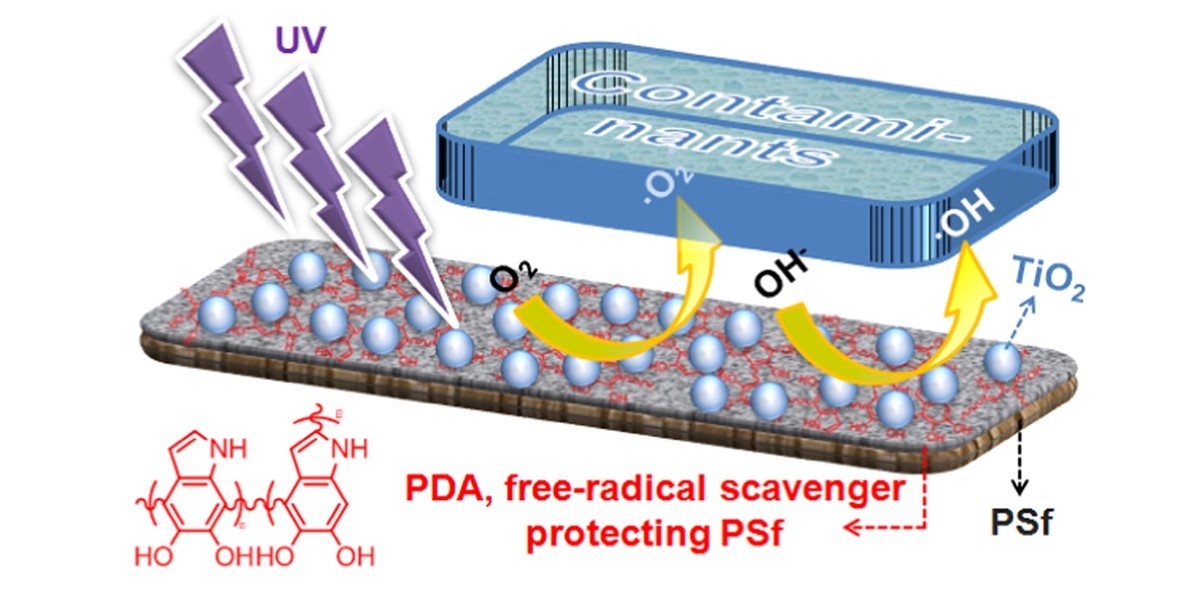A Self-Protected Self-Cleaning Ultrafiltration Membrane by Using Polydopamine as a Free-Radical Scavenger
Abstract
Herein, a free-radical scavenger platform was first utilized to prepare self-cleaning ultrafiltration membranes. First, a polydopamine (PDA) layer was attached onto the surface of a polysulfone (PSf) supporting membrane via dopamine׳s self-polymerization. Then, amine-functionalized TiO2 (TiO2-NH2) nanoparticles were chemically bonded with the PDA layer via amine-catechol adduct formation. Consequently, a self-protected TiO2/PDA/PSf composite ultrafiltration membrane with self-cleaning property was obtained. The photocatalytic TiO2 was decorated on the TiO2/PDA/PSf surface. Compared with the conventional TiO2+PSf membrane prepared by a blending method, the TiO2/PDA/PSf membrane enlarged the contact area between the photocatalytic nanoparticles and contaminants and hence had improved efficiency of photocatalytic degradation. In addition, the interlayer PDA, acting as a free-radical scavenger, protected the PSf supporting membrane from being attacked by free radicals during UV irradiation. Therefore, such a sandwich-like structure bestowed both good self-cleaning property and performance stability upon the TiO2/PDA/PSf ultrafiltration membrane. We found that the TiO2/PDA/PSf ultrafiltration membrane still possessed excellent permeability and separation ability even after a nine-day UV irradiation, while the performance of the TiO2+PSf one began to deteriorate after only one-day UV irradiation. Therefore, we believe that the free-radical scavenger platform is a promising approach to prepare self-cleaning membranes with good performance stability.

<<全文链接>>

